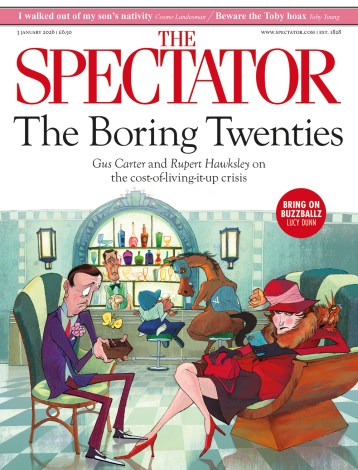Low life | 30 November 2017
My pal Charlie inherited a car and a ride-on mower from an old pal. He kept the mower and the next time he saw me in the pub he offered me the car. He’d driven down in it, he said, and it was out in the pub car park. ‘This car is bombproof,’ said Charlie handing over the key. ‘Even you couldn’t wreck this one.’ I asked how much. He wanted paying not in cash but in art, he said. He’d seen this painting for sale on a French restaurant wall and now that he was back in England he wished he’d bought it. I was returning to France in




















